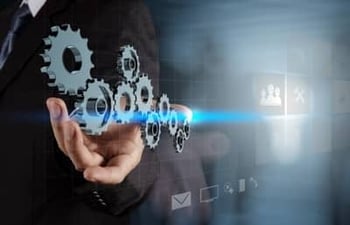What Layer of Functionality Do I Need in My ERP System?
 When manufacturers are looking at evaluating their current ERP systems by considering potential options for replacement, they first need to look at what layer of functionality they may need to support their current and future operations.The following describes three layers of functionality that can help a firm determine what type of system they may need, based on the types of transactions and operations they run. Each level adds more functionality and complexity for decision making in a more integrated environment. This important decision alone can also save your firm thousands of dollars in both acquisition, implementation and on-going maintenance costs.
When manufacturers are looking at evaluating their current ERP systems by considering potential options for replacement, they first need to look at what layer of functionality they may need to support their current and future operations.The following describes three layers of functionality that can help a firm determine what type of system they may need, based on the types of transactions and operations they run. Each level adds more functionality and complexity for decision making in a more integrated environment. This important decision alone can also save your firm thousands of dollars in both acquisition, implementation and on-going maintenance costs.
ERP systems can generally be characterized as having 3 layers that are (can be) used by small businesses. For our purposes, I’m assuming small manufacturers.
Level 1
Level 1 (base foundation) would be the Transaction Processing layer. This layer used to be referred to as “Accounting Software” although that term is passe. It includes support for:- The Procure-to-Pay Cycle – all software support for manufacturers to purchase and receive materials, move them to inventory, perhaps inspect or test them, receive and record the supplier’s invoice, and process payment to that supplier.
- The Quote/Order-to-Cash Cycle – all software support for manufacturers to create and deliver a quote to a customer, to accept a Purchase Order from a customer, to record that order (“Order Entry”) and acknowledge receipt of that order, then pick, pack, and ship the order to the customer, invoice the customer, and receive payment from the customer for the goods delivered.
- Production Cycle – Schedule production, issue/consume materials, apply labor and factory overhead through production, and receive finished production so it’s available for the Quote/Order-to-Cash Cycle.
- Inventory Management – maintain a perpetual inventory for all raw materials, semi-finished, and finished goods
- Reverse Logistics Cycle – all software support for recording customer’s request to return goods, processing of return, and crediting customer’s account
- Reverse Procurement Cycle – all software support for recording return of goods to a supplier and debiting supplier’s account
- Payroll Processing – all software support to report hours worked by employees and process payment to them
- Financial Reporting Cycle – Generate journal entries and post them to the General Ledger for all transactions described above.
Level 1 in my judgment is mandatory for most/all manufacturing entities. This can be done in systems as small and inexpensive as QuickBooks or as large as SAP.
Level 2
Level 2 is the Decision Support layer. This is where Accounting Software becomes ERP software.- Cost Estimating – Software assists users in identifying (estimating) costs of products to ensure quoting process (defined above) is profitable
- What and When to Buy – Software advises users what to buy based on various algorithms and when to request delivery
- What and When to Make – Software advises users what to make based on various algorithms and when to schedule for completion
- Production Scheduling – Software assists users in scheduling production in a very granular/detailed way to help optimize use of factory resources
- Preventative/Predictive Maintenance – Software assists users in scheduling maintenance activities before breakdowns occur
Level 3
Level 3 is the Advanced Transaction layer – beyond basic “accounting transactions”, additional transactions are now processed and shared among companies' employees providing added visibility- Engineering Changes – processing transactions to maintain proper design and revision control
- Quality Assurance/Control transactions – recording of testing and inspection results for analysis, trending, etc.
- Maintenance transactions – recording of routine and emergency maintenance transactions performed on company assets, usually production equipment
- Marketing transactions – processing of marketing campaigns
- Sales transactions – recording of interactions with customers by company sales personnel
- Hire-to-Release Cycle – managing information about employees from initial orientation, through training and development, through reviews and appraisals, to retirement/departure/dismissal.
We hope this gives you a quick guide to help you to focus in on the applications that are truly designed to support your particular manufacturing and business model. In the end it will make it a much easier transition to adapt to your new ERP system.
Scott Holter is the Director of Meaden & Moore’s Business Solutions Group. He has spent 20 plus years in manufacturing and technology consulting.











